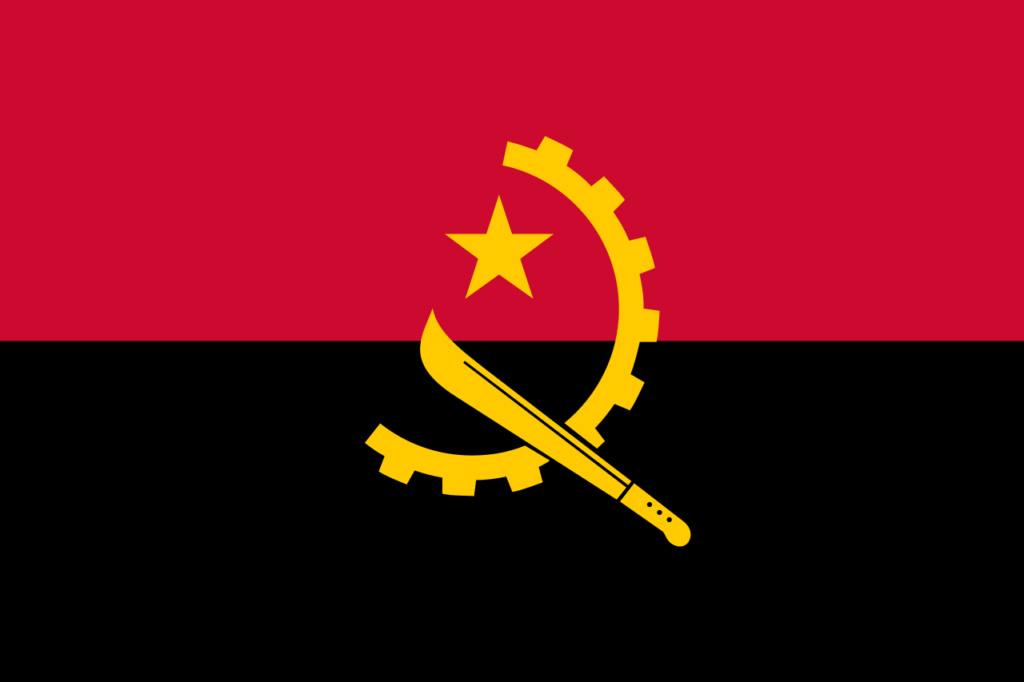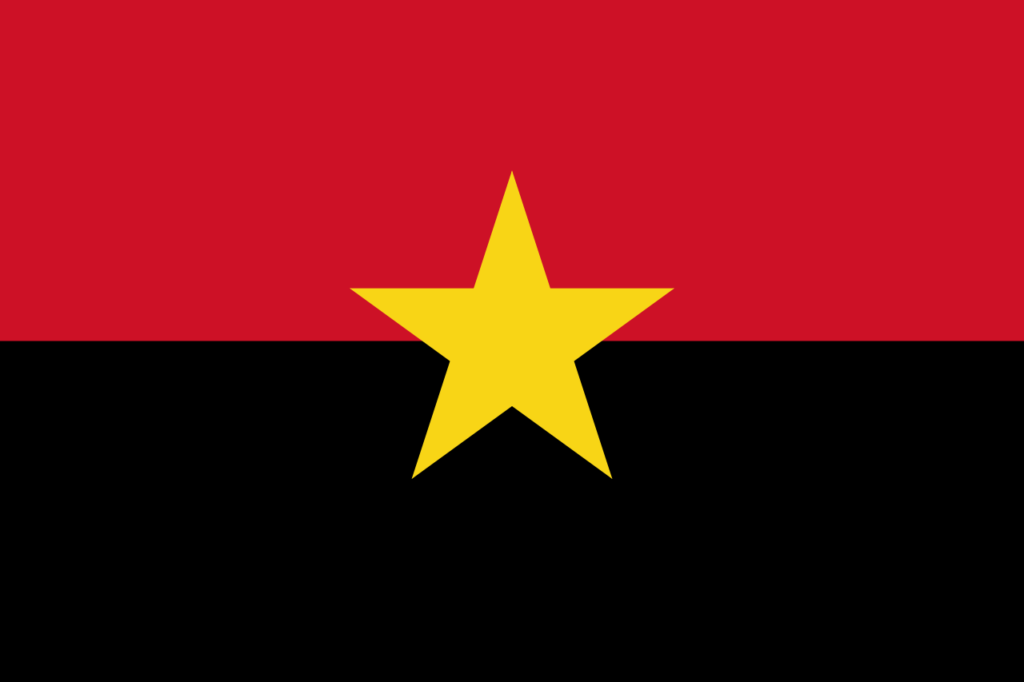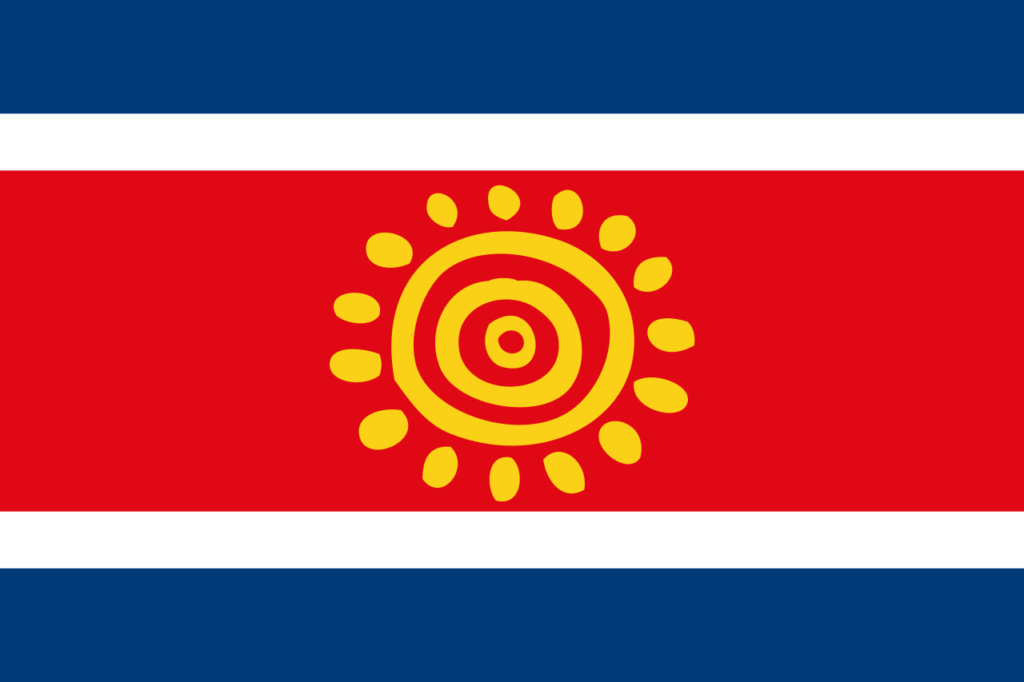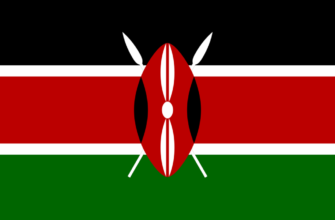
History of the Flag
The Republic of Angola is a young sovereign state that gained independence from Portugal in 1975. The same year the flag of the Republic was adopted – November 11, 1975.
However, although the decision was pleasant as early as the 70s, it did not come into force legislatively until 1992. Until then, the use of the flag was widespread, but without legitimate, legal force.
Когда Ангола была провинцией Португалии вексиллолог Алмейд Лангханс в своей книге предложил для всех заморских провинций ввести флаги на основе Португальского. Но проект не был рассмотрен.
The modern flag retains continuity with the flag of the People’s Movement for the Liberation of Angola (founded in 1956), which had as its goal the complete liberation of the country from the external influence of Portugal.

At the same time, the five-pointed star on the flag of the People’s Movement (a symbol of capitalism and American values – America actively took part in the revolutionary moods within the country) was replaced by the Communist hammer and sickle – the USSR managed to introduce its influence into the republic. The star still remained on the flag, but with a Soviet interpretation of the meaning and on a smaller scale.
At the moment, the constitutional commission of Angola is working on a new flag with different colors and the sun in the center:

Description of the flag of Angola

The modern format of the flag of Angola has a 2:3 ratio. Divided by two horizontal, parallel stripes, along the entire flag.
Instead of the classic sickle and hammer on the flag of Angola, there are other symbols that resemble the Soviet symbols. The sickle is replaced by a technological gear – a symbol of industrial development and technological progress. The hammer – a machete – a symbol of courage, peasants and the desire for victory.
Also, at the top of the composition is a five-pointed star – solidarity with the international community and commitment to a policy of several vectors of development.
The meaning of colors
- Yellow is the color of wealth and prosperity. All elements of the composition and the star are painted in this color.
- Bright red is a symbol of the blood shed by the people of the country, during the colonial rule of Portugal. Also, it is a symbol of the blood that was already spilled during the liberation of the country from foreign and domestic oppressors.
- Black is the common symbol of the African continent and dark-skinned people.
General information about Angola
| Official language | Portuguese |
| Capital | Luanda |
| Territory | 1 246 700 km2 |
| Population | 29 310 273 people |
| Currency | Quanza |
| Phone Code | +244 |











Как Анна Аксенова, я хочу отметить, что флаг Анголы – это не просто символ, но и отражение богатой истории и культуры страны. Его яркие цвета, черный и красный, символизируют африканские корни и кровопролитие в борьбе за независимость. Золотая шестериконечная звезда на флаге олицетворяет прогресс и будущее, которое стремится к развитию и процветанию. Это мощный щит, который объединяет анголийцев в стремлении к единству и благополучию. Интересно изучать, как такие символы могут вдохновлять и укреплять идентичность нации!
I visited Angola once and saw the vibrant flag everywhere! It was so inspiring to see the pride the locals had. I even joined a community celebration where they danced and sang. The energy was contagious! That trip made me appreciate diverse cultures even more!
I remember visiting Angola and being amazed by its flag. The black and red colors represent the struggle for independence, and the emblem is so rich with meaning. It made me appreciate the country’s vibrant culture and history even more. It’s a powerful symbol!
I remember visiting Angola a few years back. The vibrant colors of the flag really stood out, reflecting the rich culture and history. I even learned a bit about their independence struggle; it was inspiring to see pride in their national identity. Such a beautiful country!
I remember visiting Angola a few years back and seeing their vibrant flag everywhere. The blend of red and black with the yellow emblem really symbolizes their rich culture and history. It was fascinating to learn about its significance during my trip!
I once visited Angola and saw the flag waving proudly at a cultural festival. It reminded me of the rich history and resilience of the people. I’m grateful for that experience; it opened my eyes to beautiful traditions and the spirit of unity. Such a memorable trip!